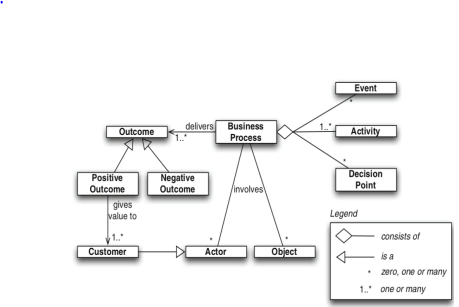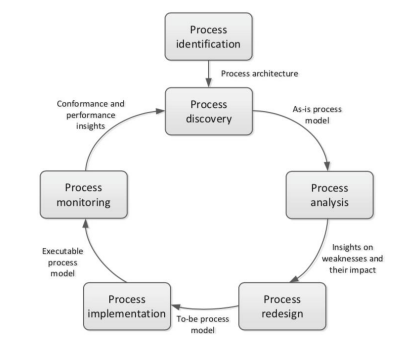Data is the new Information that allows a company to make the most critical decisions, to provide the necessary knowledge to all levels of an organisation for the correct performance of its work processes and also to assess the achievement of the goals of the business, directly influencing the effectiveness or damage the company. There are five fundamental factors for assessing the impact of IT on the company:
-The development of the Internet and converging technologies.
-The transformation of the enterprise’s business.
-The growth of an interconnected global economy.
-The rise of knowledge-based economies and information management.
-The emergence of the digital enterprise.
In the past, company activities were not perceived as sets of actions related to causality principles, where the final result was the consequence of the articulation of a set of activities (England & Miller, 2016). These processes were seen as practices within functional areas that did not arouse much interest in being automated. In disciplinary terms, process management was born in Frederick Taylor’s time and has developed to the present day, giving rise to BPM approaches.


Processes are the focus and primary unit of automation and information integration initiatives, necessary to respond agilely to the changes demanded by market dynamics (England & Miller, 2016). The management of business processes in these conditions has given rise to BPM. BPM aims to improve efficiency through the systematic management of business processes, which must be modelled, automated, integrated, monitored and optimised continuously (England & Miller, 2016). To describe BPM graphically, Business Process Modelling and Notation (BPMN) is a standardised graphical notation that allows business process modelling in a workflow format (Chinosia & Trombettab, 2012). This notation has been specially designed to coordinate the processes’ sequence and the messages flowing between the different activities actors (Chinosia & Trombettab, 2012). UML is an example of a BPMN.
1. The Context for Business Process Modelling
1.1 Purpose and Benefits of Business Process Modelling
- For customers: Improved experience, faster service, better quality.
- For business staff: Clarity in roles, responsibilities, and processes.
- For the organisation: Efficiency, compliance, agility in change.
1.2 The Three Levels of Business Process Hierarchy
- Enterprise Level: Broad, value-chain view of organisational processes.
- Event-Response Level: Operational process models triggered by events.
- Actor-Task Level: Specific tasks performed by individual actors.
1.3 Process View vs Functional View
- Process view: Focuses on value creation across functions.
- Functional view: Departmental structure (e.g., org charts).
- BAs must understand when each view is more appropriate.
2. Modelling at the Enterprise Level
2.1 Key Techniques
- Porter’s Value Chain: Primary and support activities.
- SIPOC: Suppliers, Inputs, Process, Outputs, Customers.
- Harmon’s Organisational Model: Encompasses strategy, processes, and enablers.
- Value Proposition: What sets the organisation apart for the customer.
2.2 Supporting Value Propositions
- How business processes help deliver:
- Desired product/service features
- Strong customer relationships
- Positive brand image and reputation
3. Modelling at the Event-Response Level
3.1 Business Process Modelling Elements
- Events: External, internal, or time-based triggers.
- Actors: Roles initiating or completing tasks.
- Tasks: Activities performed.
- Swimlanes: Responsibility lanes in diagrams.
- Decisions, Flows, Timelines: Structure and control logic.
3.2 Standard Notation Sets
- UML (Unified Modelling Language)
- BPMN (Business Process Model and Notation)
- Importance: Clear, standardised communication and consistent interpretation.
3.3 Terminology Relationships
- Process: End-to-end activities.
- Task: One role, one location, one time (OPOPOT principle).
- Step: Specific actions within a task.
3.4 Task Representation
- Represented by a single box for simplicity and clarity.
3.5 Types of Business Events
- External (e.g. customer request)
- Internal (e.g. stock threshold reached)
- Time-based (e.g. end of month)
3.6 Performance Measures
- Types:
- Financial: Costs, ROI
- Customer experience: Satisfaction, service levels
- Process efficiency: Time, error rates
- Difference between internal KPIs and external customer expectations
4. Modelling at the Actor-Task Level
4.1 Task Description
- Must include:
- Name, actor, trigger
- Inputs, outputs
- Costs, performance measures
- Standards, steps, business rules
4.2 Task Modelling Techniques
- UML activity diagrams
- Structured English (for sequences, selections, loops)
- Use Case Descriptions
- Used to break down, document, and validate how tasks are performed.
5. Improving Business Processes
5.1 Improvement Approaches
- Simplify: Remove unnecessary steps.
- Redesign: Entirely new process structure.
- Bottleneck removal: Speed up constraints.
- Change task sequence: Reorder for efficiency.
- Redefine boundaries: Adjust scope/responsibilities.
- Automate: Use technology to replace manual work.
- RPA (Robotic Process Automation): Software mimics repetitive human actions.
5.2 Challenging Business Rules
- Assess:
- Internal policies
- External regulations
- Assumptions limiting process improvement
5.3 Identifying Performance Gaps
- Reasons might include:
- Lack of skills
- Resource shortages
- Weak ownership
- Poor supporting systems
- Outdated business rules
5.4 Scenario Analysis
- A method to test process logic and usability by walking through real-life or hypothetical situations.
5.5 Gap Analysis
- Identify functional requirements that can be supported with IT solutions in the “to be” process.
6. Managing and Implementing Change
6.1 POPIT™ Model for Change Impact
- Consider change across:
- People
- Organisation
- Processes
- Information
- Technology
6.2 Change Implementation Strategies
- Direct (Big Bang): Immediate switch.
- Parallel: Run old and new together temporarily.
- Pilot: Trial in a limited area first.
- Phased: Gradual rollout.